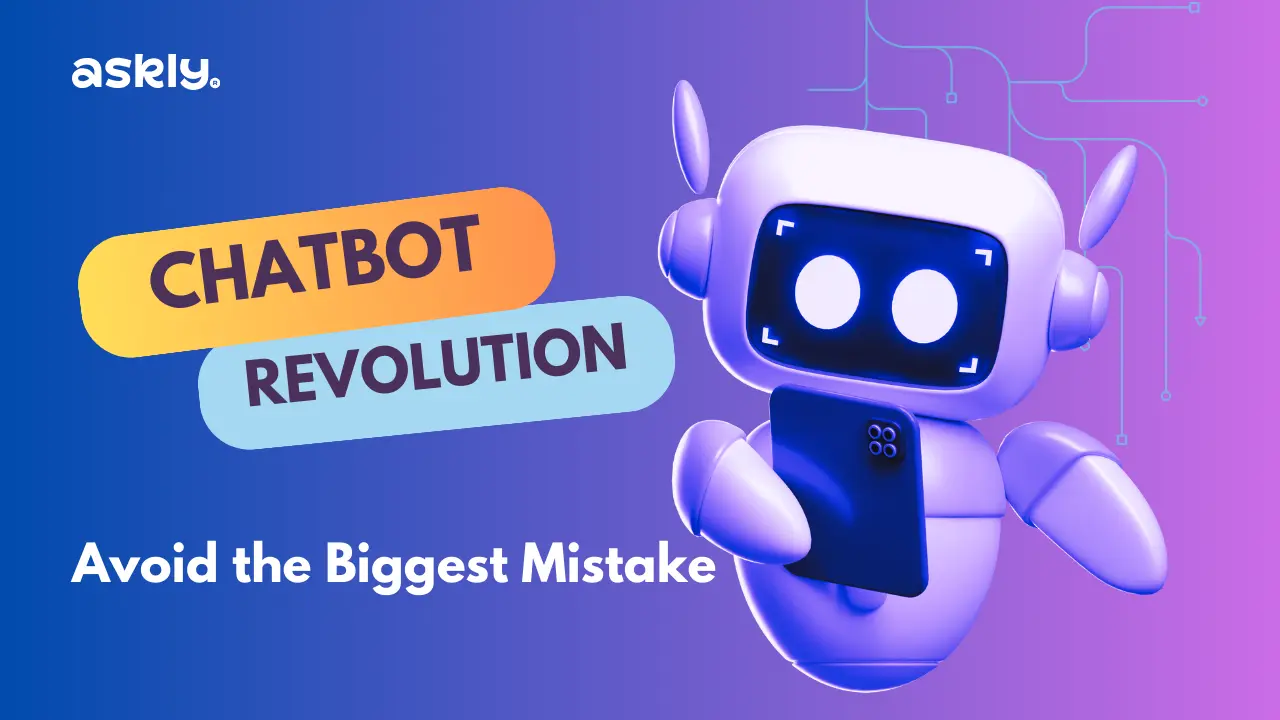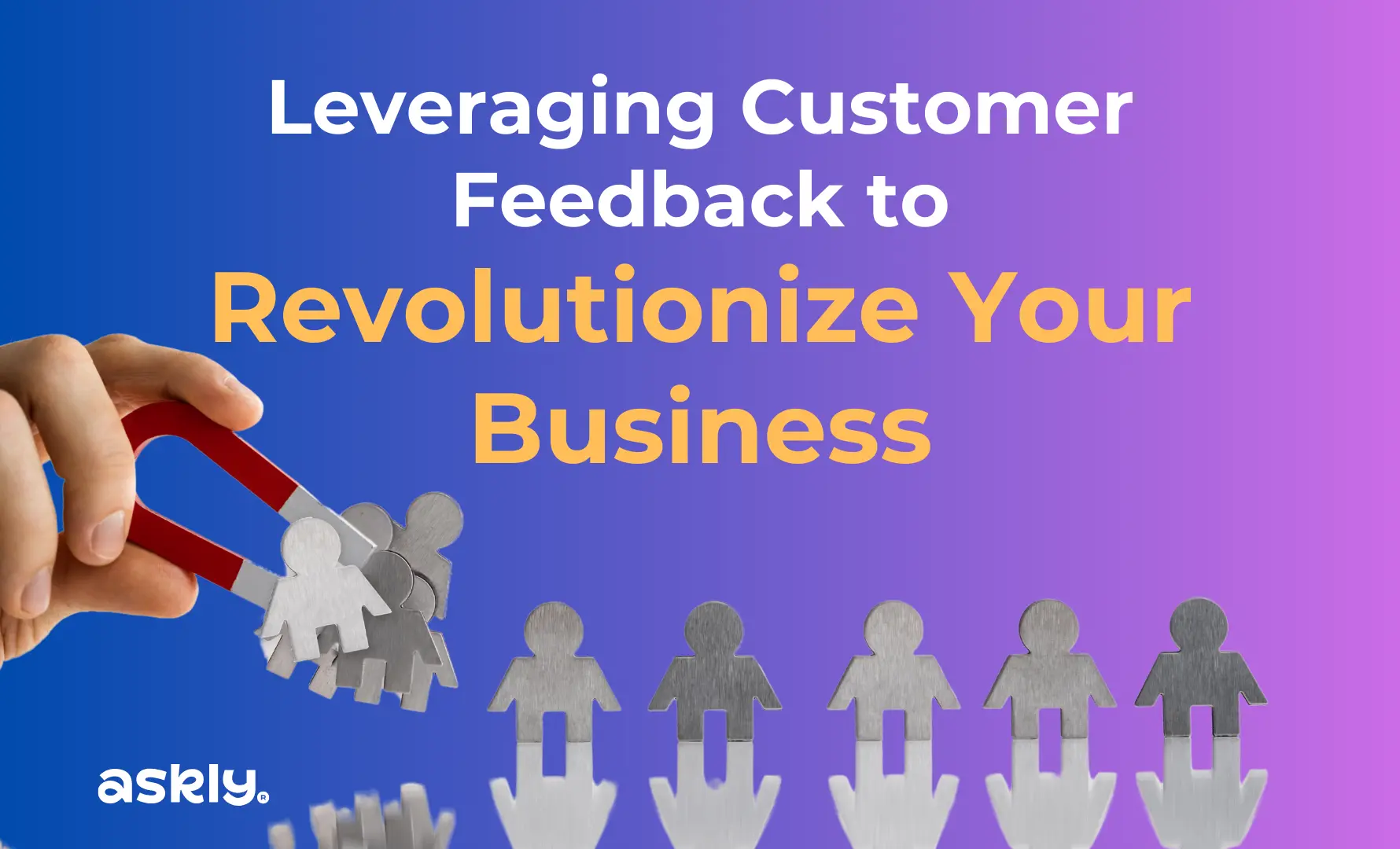Revolutionizing Chatbots: Avoid the Biggest Mistake

Sandra Roosna
Askly CEO & Founder
One huge mistake in chatbot quality: Forgetting the chatbot post-launch! The journey truly begins upon launch, yet many businesses abandon it thereafter
Despite perceptions of success after launching your chatbot, you have to admit that your chatbot will probably fail to meet customer expectations, leading to frustration and lost opportunities.
Neglecting post-launch assessment can result in angry customers abandoning websites and causing significant harm to businesses. That's why you should take a closer look at this guide.
Angry customers are unlikely to return and may deter others from engaging with the brand, impacting long-term growth.
Are you sacrificing Quality for Cost?
Cheap or free chatbot solutions often promise exceptional customer experiences but fail to deliver on that promise.
Many businesses mistakenly believe that the quality of customer experience depends solely on the solution chosen. No, it does not. Never believe that free solutions, or ones that cost under 100 euros/month, can deliver any satisfying customer experience.
In reality, customer experience hinges more on the business's active contribution and involvement than the solution itself.
Providers of inexpensive solutions often absolve themselves of responsibility for chatbot quality, leaving businesses at risk.
Toolbox or Full Solution?
While inexpensive chatbot solutions may serve as a toolbox, they often lack comprehensive functionality for minimal optimal performance.
Choosing between a toolbox and a full solution depends on the involvement and responsibility a business is willing to undertake.
Businesses must recognize that the quality of customer experience ultimately rests on their shoulders, not solely on the solution.
Investing in a comprehensive solution ensures greater accountability and support for maintaining chatbot quality over time.
Who is Responsible for Your Chatbot Quality?
Recently, Air Canada lost a legal dispute because their website chatbot provided incorrect information to a passenger, causing damage.
The responsibility for chatbot quality lies squarely with the businesses that deploy them, not the solution providers. Businesses must actively monitor and evaluate their chatbots' performance to meet customer expectations.
Analyzing customer interactions, updating the knowledge base, and refining responses are essential for maintaining chatbot quality.
Relying solely on the solution provider for chatbot quality is risky and can lead to dissatisfaction and lost customers.
What Angry Customers Do: The Cost of Neglecting Chatbot Quality
Angry customers who encounter subpar chatbot experiences are likely to take drastic actions, such as shutting down websites.
A study published in Forbes revealed that 30% of customers abandon your website after a bad chatbot. Quite a lot.
These dissatisfied customers may never return to your site and are unlikely to recommend the business to others. Rather, you risk being mentioned in some social media communities as “another chatbot failure” and damaging the trust of your potential customers.
In extreme cases, frustrated customers may contact businesses via alternative channels, adding to operational burdens. However, chatbot remains the most cost-efficient way of communication, so it is worth setting it up smartly.
Trends in E-commerce Chatbots: Harnessing the Power of AI
With 1.4 billion consumers actively using messaging apps, chatbots have become indispensable tools for e-commerce businesses.
Despite initial negative engagement, recent developments in chatbot technology, such as ChatGPT, have transformed user experiences.
Forward-thinking businesses leverage AI-powered chatbots to enhance customer support, streamline operations, and drive sales.
By embracing AI-driven chatbots, e-commerce businesses can stay ahead of trends and deliver superior customer experiences.
Real-Life Chatbot Use Cases That Work: The Punktid Technologies Success Story
Recently, Klarna announced the results of its AI assistant. The numbers speak for themselves:
- The AI assistant has had 2.3 million conversations, two-thirds of Klarna's customer service chats
- It is doing the equivalent work of 700 full-time agents
- Customers now resolve their errands in less than 2 mins compared to 11 mins previously
- It's available 24/7, and communicates in more than 35 languages
Their AI Assistant is estimated to drive USD 40 million in profit improvement yearly. Read the full case study here.
While this case is from a billion-dollar company, some might think it's not relevant. So, let's see another case of e-commerce business with 2M eur revenue.
Punktid revolutionized its customer service strategy by leveraging Askly, a comprehensive AI Assistant solution exactly like the one used by Klarna, but for SMEs.
Such tools are a huge opportunity as they enable seamless and constant improvement of your chatbot. It learns from questions and answers provided by human-powered agents and replaces agents smoothly without compromising quality.
Note that Punktid consolidated communication channels and focused solely on chat support. They used to provide customer service via phone, email, chat, IG, and FB. The speed and quality of responses at different touchpoints caused workload and lower customer satisfaction.
Such a strategy enables larger volumes of chat conversations, making AI Assistant learn to know your customers better, and how your team solves the cases.
Integrating Askly AI-powered Assistant and real-time translation capabilities enhanced customer satisfaction and operational efficiency.
As a result, Punktid expanded to 6 markets, achieved higher customer satisfaction, and reduced costs by 75%! Read full case study here.
Conclusion
In the dynamic landscape of e-commerce, chatbots play a pivotal role in shaping customer experiences and driving business growth.
By avoiding common pitfalls, such as neglecting post-launch evaluation and sacrificing quality for cost, businesses can unlock the full potential of chatbot solutions.
Investing in comprehensive chatbot solutions, actively monitoring performance, and prioritizing customer satisfaction is key to success in the digital marketplace.
If you wish to learn more, book a short AI Assistant demo here.


